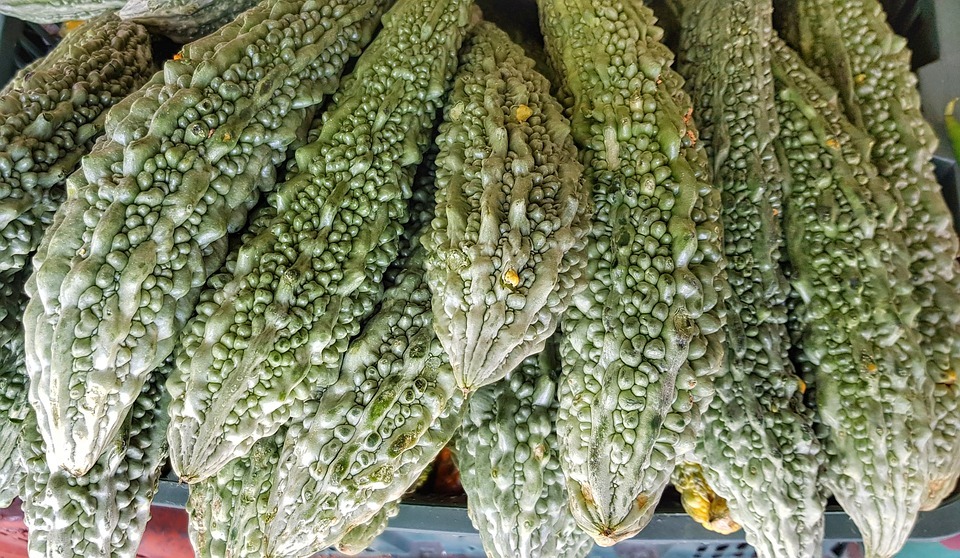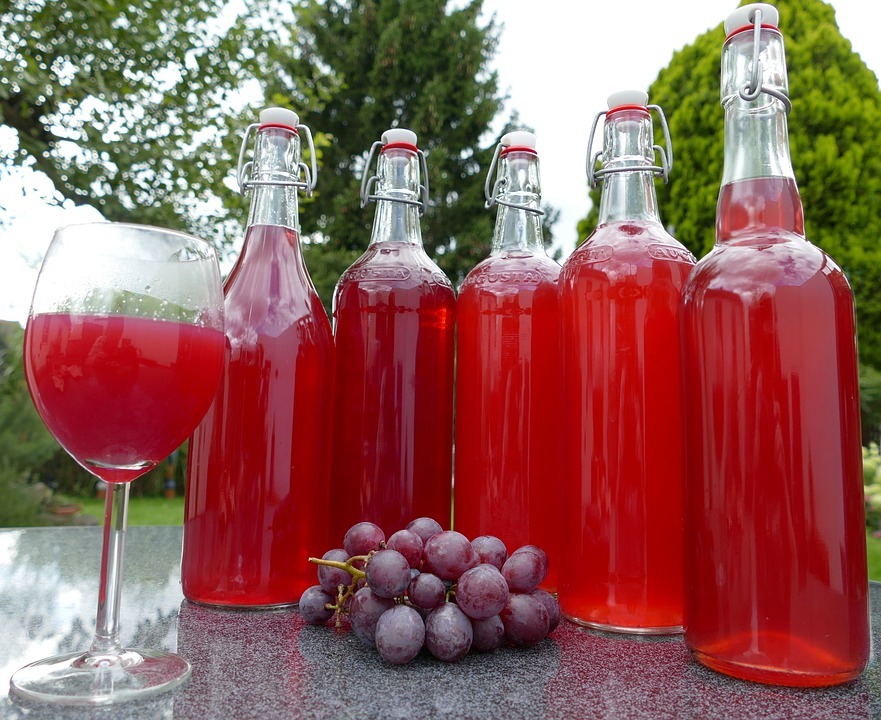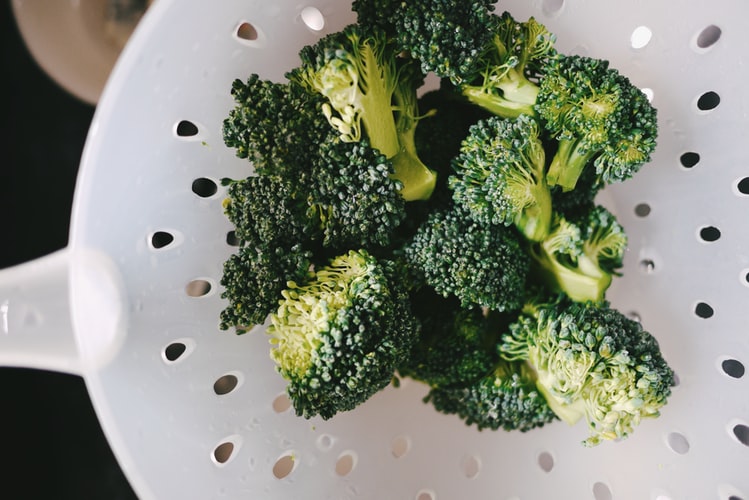Understanding Phytonutrients in Juice
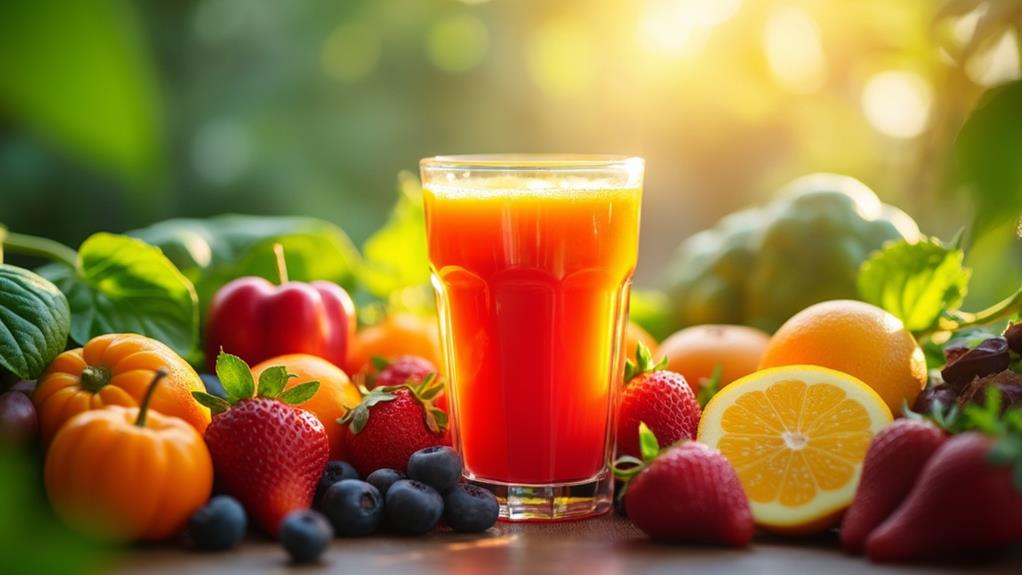
Evaluating the health benefits of juice necessitates understanding the role of phytonutrients. These naturally occurring compounds in fruits and vegetables offer various health advantages, such as boosting the immune system and reducing inflammation. However, not all juices are equally nutritious. For instance, resveratrol in purple grape juice is known for its heart-protective properties, while tannins in cranberry juice can help prevent urinary tract infections. It's also essential to consider the balance between juice intake and consuming whole fruits to ensure comprehensive nutritional benefits.
Juice Quality and Composition
Evaluating juice quality and composition involves scrutinizing the contents of your glass. Juice labels must specify the juice percentage, and for optimal health benefits, choosing 100% juice is advisable. This ensures you receive a product free from added sugars and artificial ingredients, thus preserving its nutritional integrity.
Darker, colorful juices such as those from purple grapes or pink grapefruit typically contain higher levels of antioxidants, vitamins, and minerals. These phytonutrients are vital for your health, providing essential macronutrients and micronutrients that lighter-colored juices might lack. Opting for 100% juice ensures these beneficial compounds are retained, particularly when the juice is produced using methods that preserve these nutrients.
It's important to differentiate between 100% juices and juice drinks. Juice drinks often have lower juice percentages and added sugars, diminishing their nutritional value. In the U.S., regulations mandate minimum Brix concentrations for different fruits to be labeled as 100% juice, ensuring consistency and quality in juice production. This regulatory framework enables you to make informed choices about the juices you consume, prioritizing your health and well-being.
Nutritional Needs and Considerations
When incorporating phytonutrient-rich juices into your diet, it's important to balance the health benefits with individual health conditions and life stage-specific needs. While antioxidants and anti-inflammatory properties offer significant benefits, individuals with conditions such as diabetes should monitor their sugar intake. Including whole fruits and vegetables ensures you receive necessary fiber and avoid excessive calorie consumption.
Health Benefits Breakdown
Incorporating phytonutrient-rich juices into your diet can enhance your health by addressing multiple nutritional needs. Phytonutrients like carotenoids and flavonoids found in fruit juices offer numerous benefits. They're packed with antioxidants that can elevate immune function and help fend off chronic diseases. Vitamin C-rich juices, such as orange juice, are particularly advantageous for maintaining a strong immune system and reducing inflammation.
Juices from colorful fruits and vegetables, like purple grape juice and cranberry juice, stand out due to their unique phytonutrient profiles. Purple grape juice is known for its protective effects against heart disease, while cranberry juice can help prevent urinary tract infections. These juices provide a concentrated source of crucial nutrients, making them a powerful supplement to your diet.
Consuming 100% juice helps meet daily recommended fruit intake, supplying critical nutrients without the added sugars found in many juice drinks. For children, juices rich in vitamin C and folate support growth and immune function, but it's important to consume them in moderation to avoid excess calorie and sugar intake. By choosing the right juices, you can enhance your comprehensive well-being.
Individual Health Conditions
While phytonutrient-rich juices offer an abundance of health benefits, it's crucial to consider individual health conditions when incorporating them into your diet. For instance, if you have kidney disease, you should be cautious with citrus juices like orange juice due to their high potassium content, which can exacerbate your condition. Similarly, people with hypertension might need to limit their intake of certain fruit juices, as they can be high in natural sugars that could affect blood pressure levels.
Diabetics should also be mindful of juice consumption, as the concentrated sugars in juices can cause rapid spikes in blood sugar. Conversely, if you suffer from urinary tract infections (UTIs), cranberry juice could be beneficial because it contains tannins that help prevent bacteria from adhering to the urinary tract.
Here are some key considerations:
- Kidney disease: Avoid high-potassium juices like orange juice.
- Hypertension: Limit juices high in natural sugars.
- Diabetes: Consume juice in moderation to avoid blood sugar spikes.
- UTIs: Cranberry juice may offer some benefits.
- Children: Avoid juice for kids under 6 months and limit intake for older children.
Taking these factors into account can help you make healthier choices tailored to your specific health needs.
Age-Specific Recommendations
Age-specific recommendations for juice consumption are crucial for optimal health and nutrition. Infants under 6 months should not be given juice at all. For infants aged 6-12 months, small amounts (4-6 ounces) of juice can aid in alleviating constipation but should be closely monitored. Children aged 1-6 years should limit their juice intake to 4-6 ounces daily, while those aged 7 years and older can consume up to 8-12 ounces.
Prioritizing whole fruits over juice is essential for children's nutrition. Whole fruits provide important fiber and nutrients without the concentrated sugars found in juice. Excessive juice consumption can lead to increased calorie intake, contributing to obesity and dental issues. Therefore, moderating juice intake is crucial to prevent these risks.
Educating parents on these age-specific recommendations is vital. Despite the benefits of phytonutrients in juice, 92.7% of women aged 19-30 and 60% of children aged 1-18 do not meet their recommended fruit intake. By focusing on whole fruits and moderated juice consumption, parents can ensure their children receive balanced nutrition without the downsides of excessive sugar. Making informed choices will help support their overall health and well-being.
Pros and Cons of Juice Consumption
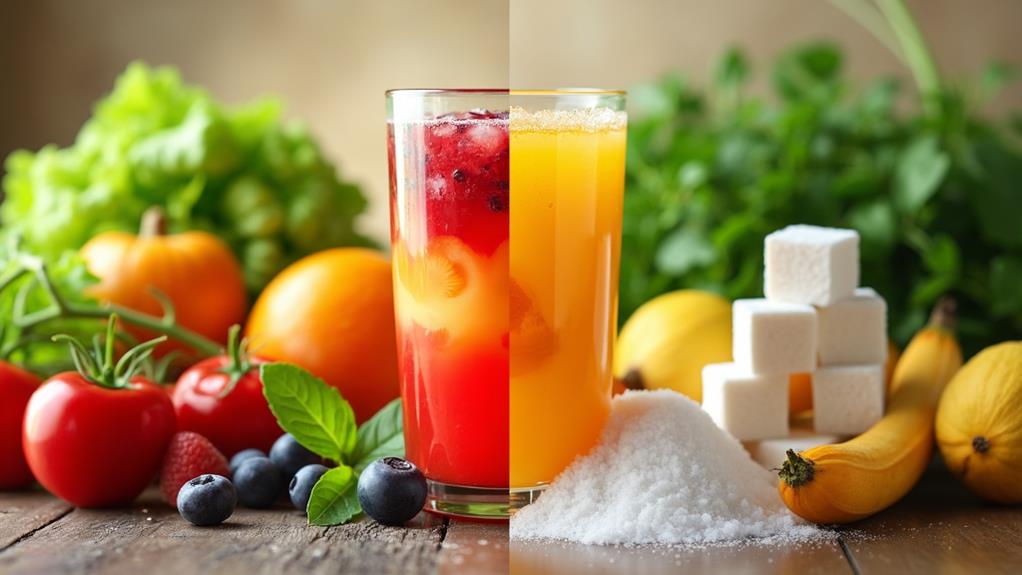
Juice consumption comes with both benefits and drawbacks that are important to consider for maintaining a balanced diet. On the positive side, juices are rich in essential vitamins and antioxidants, similar to those found in whole fruits and vegetables. These phytonutrients, such as carotenoids and flavonoids, provide numerous health benefits, including boosting immune function and reducing inflammation.
However, there are also disadvantages to consuming juice. While 100% juice can be a convenient way to increase your fruit intake, it lacks the fiber present in whole fruits and vegetables. This fiber is crucial for regulating hunger and slowing sugar absorption. Without it, you may experience a spike in calorie intake, potentially leading to weight gain and obesity. Therefore, moderation is essential, as excessive juice consumption has been associated with negative health outcomes.
To help you evaluate the pros and cons:
- Rich in phytonutrients: Juices contain beneficial compounds like carotenoids and flavonoids.
- High in vitamins: A convenient source of essential vitamins.
- Lacks fiber: Missing the fiber that helps regulate hunger.
- Increased calorie intake: Can contribute to weight gain if consumed excessively.
- Moderation is key: Balance juice with whole fruits and vegetables to avoid potential health issues.
Juice Fortification and Safety
Enhancing the nutritional value of juice often involves fortification, where essential vitamins and minerals like calcium and vitamin D are added to support bone health. This process significantly boosts the nutrient content, offering additional health benefits. However, it's important to manage levels carefully to avoid nutrient imbalances.
Ensuring microbiological safety is crucial in juice production. Pasteurization is a widely-used method that eliminates harmful pathogens, thereby reducing contamination risks. If making juice at home, always wash fruits and vegetables thoroughly to minimize potential contaminants.
While pasteurization is effective, nonthermal technologies like high hydrostatic pressure are becoming more popular. These methods better preserve the juice's nutritional value compared to traditional heating while still ensuring microbiological safety.
Here's a quick comparison of methods:
| Method | Benefits | Drawbacks |
|---|---|---|
| Fortification | Enhanced vitamin/mineral content | Risk of nutrient imbalances |
| Pasteurization | Eliminates pathogens | May reduce some nutrients |
| Nonthermal Technologies | Preserves nutrients | Can be costly |
Juice Consumption Guidelines for Children
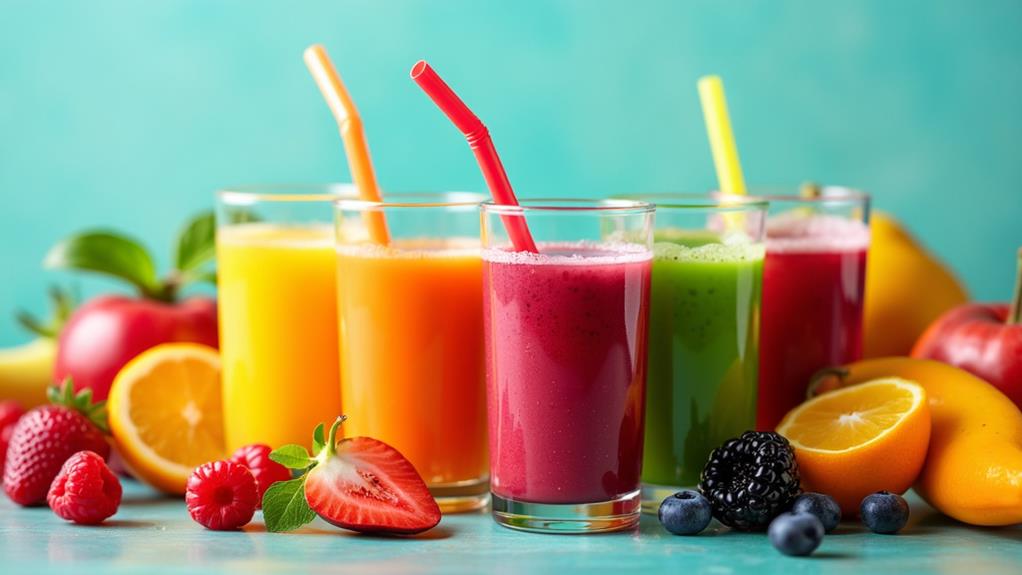
Ensuring the appropriate juice intake for children is crucial for their health. The American Academy of Pediatrics provides clear guidelines to help parents manage their child's juice consumption effectively.
- Infants under 6 months: No juice is recommended.
- Infants over 6 months: Minimal amounts can be given to alleviate constipation.
- Children aged 1-6 years: Limit juice to 4-6 ounces per day.
- Children aged 7 years and older: Limit juice to 8-12 ounces per day.
Switching to whole fruits whenever possible is more beneficial for your child's nutrition. Whole fruits provide fiber, which promotes satiety and digestive health, in contrast to juice, which can lead to spikes in sugar levels. Adhering to these guidelines can help prevent issues such as obesity and dental problems associated with excessive juice consumption. Moderation is key to aligning with dietary recommendations that promote increased intake of fruits and vegetables.
Quick Reference:
- Infants under 6 months: No juice
- Infants over 6 months: Small amounts for constipation
- Children aged 1-6 years: 4-6 ounces/day
- Children aged 7 years and older: 8-12 ounces/day
- Whole fruits preferred over juice
Types of Phytonutrients in Juice
Incorporating phytonutrient-rich juices into your diet can yield numerous health benefits. Juices made from colorful fruits and vegetables are rich in various phytonutrients that enhance overall well-being.
Carotenoids, such as beta-carotene in carrot juice and lycopene in tomato juice, are powerful antioxidants that help protect cells from damage. Flavonoids, including quercetin in apple juice and catechins in green tea, offer anti-inflammatory effects and support heart health, making them valuable additions to your juice regimen.
Ellagic acid, found in berry juices like strawberry and raspberry, has been studied for its potential to slow cancer cell growth and neutralize harmful chemicals in the body. Resveratrol, present in purple grape juice, is a potent antioxidant that may help protect against heart disease and certain cancers.
Juices from cruciferous vegetables, such as broccoli juice, contain glucosinolates, which are associated with cancer-fighting properties. These phytonutrients enhance the body's ability to inhibit cancer development. By incorporating a variety of these phytonutrient-rich juices into your diet, you can access their diverse health benefits and bolster your overall health.

